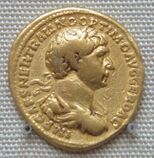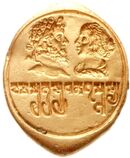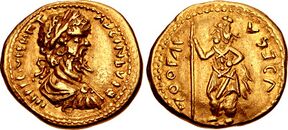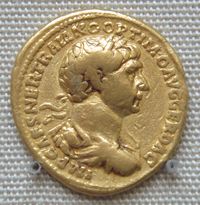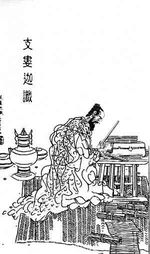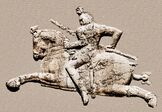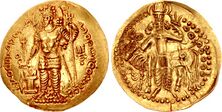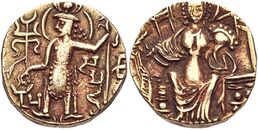إمبراطورية الكوشان
امبراطورية كـوشـان Kushan Empire | |
|---|---|
| 30–375 | |
![أراضي كوشان (الخط المتصل) وأقصى اتساع لممتلكات كوشان في عهد كانيشكا (خط منقط)، حسب نقش ربتك.[1]](/w/images/thumb/e/e5/Kushanmap.jpg/350px-Kushanmap.jpg) | |
| العاصمة | Peshawar (Puruṣapura) Taxila (Takṣaśilā) Mathura (Mathurā) |
| اللغات الشائعة | Greek (official until ح. 127)[note 1] Bactrian[note 1] (official from ح. 127)[note 2] Gandhari Prakrit[4] Hybrid Sanskrit[4] |
| الدين | Hinduism[5] Buddhism[6] Zoroastrianism[7] |
| صفة المواطن | Kushanas (Yuezhi) |
| الحكومة | Monarchy |
| Emperor | |
• 30–80 | Kujula Kadphises (first) |
• 350–375 | Kipunada (last) |
| الحقبة التاريخية | القِدم الكلاسيكي |
• كوجولا كادفيسس يوحد قبائل يويژي في تحالف | 30 |
| 375 | |
| Area | |
| 200 (low-end estimate of peak area)[9] | 2،000،000 km2 (770،000 sq mi) |
| 200 (high-end estimate of peak area)[10] | 2،500،000 km2 (970،000 sq mi) |
| Currency | Kushan drachma |
امبراطورية كوشان Kushan Empire (ح. القرون الأول-الثالث) كانت دولة باكترية امتدت في أوج عظمتها الثقافية، حوالي 105-250 م، من تاجيكستان الحالية إلى أفغانستان، پاكستان نزولاً إلى وادي نهر الگنج في شمال الهند. الامبراطورية أنشأتها قبيلة كوشان من تحالف يويژي ، المعتقـَد بكونه من شعب هندو-اوروبي[11] من شرق حوض تريم، الصين، والمحتمل علاقتها بالطخاريين. وكانت لهم اتصالات دبلوماسية مع الامبراطورية الرومانية، الساسانية والصين، ولعدة قرون كانوا مركز التجارة بين الشرق والغرب.
كوشان، إمبراطورية. إمبراطورية كوشان دولة ازدهرت في المنطقة التي تُشكل الآن باكستان وأفغانستان وشمال غربي الهند في الفترة من منتصف القرن الأول قبل الميلاد تقريبًا إلى منتصف القرن الثالث الميلادي. وقد أسس كوجولا كادفيسز الإمبراطورية عندما قام بتوحيد خمس قبائل من وسط آسيا. وقام مع هذه القبائل بغزو مُلْكَي كابول وكشمير. ووسع خلفاء كوجالا كادفيسز من رقعة الإمبراطورية لتشمل وادي نهر السِّند وغربي وادي نهر الگنج. وكان كانيشكا من أشهر حكام كوشان. كانيشكا.
وكان للإمبراطورية أهميتها كجسر بين مختلف الحضارات. وفتح أباطرة كوشان طريق القزّ وقاموا بحمايتها، وهي طريق رئيسية للقوافل المحملة بالحرير وغيره من البضائع الثمينة القادمة من الصين إلى الهند والشرق الأوسط. وكانت السفن تغادر الموانئ الهندية متجهة إلى الإمبراطورية الرومانية محملة بالحرير والتوابل والمراهم. وكانت روما ترد على ذلك بإرسال العملات الذهبية والعديد من السلع المتميزة. وعبر هذه الطرق التجارية كانت الأفكار والعادات تنتقل أيضًا بين شعوب آسيا الوسطى والصين والهند وفارس.
كانت البوذية الديانة الرئيسية لإمبراطورية كوشان. وقام البوذيون بنشر الدين في جميع أنحاء الإمبراطورية وفي الصين. ونقش النحاتون في مدينتي جاندهارا وماتهورا أول صُوَر لبوذا على الحجارة. وصاغ الفنانون في جاندهارا تماثيلهم البوذية على غرار تماثيل الآلهة اليونانية والرومانية.
الأصول
المصادر الصينية تصف گويشوانگ (بالصينية: 貴霜)، وتعني "كوشانا Kushans"، كواحدة من خمس قبائل أرستقراطية في يويژي، والتي تـُنطق كذلك يويه-چي Yueh-chi،[14] (Ch: 月氏), a loose confederation of supposedly Indo-European peoples.[15] كما يـُعتبر اليويژي عموماً كأقصى الشعوب شرقاً الناطقة باحدى اللغات الهندو-اوروبية، والذين كانوا يعيشون في المراعي القاحلة في شرق آسيا الوسطى، في شينجيانگ المعاصرة وگانسو، والمحتمل تحدثهم بلهجات من اللغة الطخارية، حتى تم طردهم غرباً من قـِبل [[شيونگ&38204;نو]] في 176-160 ق.م.. القبائل الخمس المكونة لليويژي يـُعرفوا في التاريخ الصيني بالأسماء شيومي (ص: 休密), گويشوانگ (ص: 貴霜), شوانگمي (ص: 雙靡), شيدون (ص: 肸頓)، و دومي (ص: 都密).
المؤرخ جون كي يضع تحركات الكوشان في السياق الأكبر للهجرات العظمى التي شهدتها المنطقة:
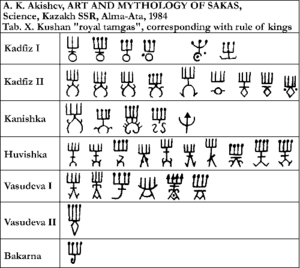
تتحدث المصادر الصينية عن تشييد السور العظيم في القرن الثالث ق.م. وصد مختلف القبائل المغيرة. مجبرة إياها على التوجه غرباً ولاحقاً جنوباً، وقد حلت هذه القبائل محل قبائل أخرى فيما يشبه تأثير الدومينو الذي استمر لعدة عقود وانتشر في أرجاء آسيا الوسطى. كل من الپارثيين من إيران و اليونان الباكتريين من باكتريا طـُردا من مناطقهم من قِبل الشاكاس الآتين من تخوم بحر آرال. إلا أن الشاكاس، بدورهم، طردهم يويه-چي الذي طـُردوا بدورهم غرباً إلى شينجيانگ بواسطة [[شيونگ&38204;نو|هيونگ-نو]]. آخر تلك القبائل، الهون، لم يصلوا الهند، لحسن الحظ، لفترة طويلة. ولكن اليويه-چي واصلوا الضغط على الشاكاس، وبنجاحهم في طرد الشاكاس من باكتريا، فإن أقسام أو أفخاذ من هؤلاء اليويه-چي هم من واصلوا التقدم جنوباً إلى الهند في النصف الثاني من القرن الأول الميلادي."[16]
In South Asia, Kushan emperors regularly used the dynastic name ΚΟϷΑΝΟ ("Koshano") on their coinage.[17] Several inscriptions in Sanskrit in the Brahmi script, such as the Mathura inscription of the statue of Vima Kadphises, refer to the Kushan Emperor as ![]()
![]()
![]() , Ku-ṣā-ṇa ("كوشانا").[17][18] Some later Indian literary sources referred to the Kushans as Turushka, a name which in later Sanskrit sources[note 3] was confused with Turk, "probably due to the fact that Tukharistan passed into the hands of the western Turks in the seventh century".[19][20] According to John M. Rosenfield, Turushka, Tukhāra or Tukhāra are variations of the word Tokhari in Indian writings.[21] Yet, according to Wink, "nowadays no historian considers them to be Turkish-Mongoloid or "Hun", although there is no doubt about their Central-Asian origin."[19]
, Ku-ṣā-ṇa ("كوشانا").[17][18] Some later Indian literary sources referred to the Kushans as Turushka, a name which in later Sanskrit sources[note 3] was confused with Turk, "probably due to the fact that Tukharistan passed into the hands of the western Turks in the seventh century".[19][20] According to John M. Rosenfield, Turushka, Tukhāra or Tukhāra are variations of the word Tokhari in Indian writings.[21] Yet, according to Wink, "nowadays no historian considers them to be Turkish-Mongoloid or "Hun", although there is no doubt about their Central-Asian origin."[19]
الكوشان المبكرون
Some traces remain of the presence of the Kushans in the area of Bactria and Sogdiana in the 2nd-1st century BC, where they had displaced the Sakas, who moved further south.[23] Archaeological structures are known in Takht-i Sangin, Surkh Kotal (a monumental temple), and in the palace of Khalchayan. On the ruins of ancient Hellenistic cities such as Ai-Khanoum, the Kushans are known to have built fortresses. Various sculptures and friezes from this period are known, representing horse-riding archers,[24] and, significantly, men such as the Kushan prince of Khalchayan with artificially deformed skulls, a practice well attested in nomadic Central Asia.[25][26] Some of the Khalchayan sculptural scenes are also thought to depict the Kushans fighting against the Sakas.[27] In these portrayals, the Yuezhis are shown with a majestic demeanour, whereas the Sakas are typically represented with side-whiskers, and more or less grotesque facial expressions.[27]
The Chinese first referred to these people as the Yuezhi and said they established the Kushan Empire, although the relationship between the Yuezhi and the Kushans is still unclear. Ban Gu's Book of Han tells us the Kushans (Kuei-shuang) divided up Bactria in 128 BC. Fan Ye's Book of Later Han "relates how the chief of the Kushans, Ch'iu-shiu-ch'ueh (the Kujula Kadphises of coins), founded by means of the submission of the other Yueh-chih clans the Kushan Empire."[23]
The earliest documented ruler, and the first one to proclaim himself as a Kushan ruler, was Heraios. He calls himself a "tyrant" in Greek on his coins, and also exhibits skull deformation. He may have been an ally of the Greeks, and he shared the same style of coinage. Heraios may have been the father of the first Kushan emperor Kujula Kadphises.[بحاجة لمصدر]
The Chinese Book of Later Han chronicles then gives an account of the formation of the Kushan empire based on a report made by the Chinese general Ban Yong to the Chinese Emperor ح. AD 125:
More than a hundred years later [than the conquest of Bactria by the Yuezhi], the prince [xihou] of Guishuang (Badakhshan) established himself as king, and his dynasty was called that of the Guishuang (Kushan) King. He invaded Anxi (Indo-Parthia), and took the Gaofu (Kabul) region. He also defeated the whole of the kingdoms of Puda (Paktiya) and Jibin (Kapisha and Gandhara). Qiujiuque (Kujula Kadphises) was more than eighty years old when he died. His son, Yangaozhen [probably Vema Tahk (tu) or, possibly, his brother Sadaṣkaṇa ], became king in his place. He defeated Tianzhu [North-western India] and installed Generals to supervise and lead it. The Yuezhi then became extremely rich. All the kingdoms call [their king] the Guishuang [Kushan] king, but the Han call them by their original name, Da Yuezhi.
التأثيرات الثقافية المتعددة
In the 1st century BC, the Guishuang (Ch: 貴霜) gained prominence over the other Yuezhi tribes, and welded them into a tight confederation under commander Kujula Kadphises.[30] The name Guishuang was adopted in the West and modified into Kushan to designate the confederation, although the Chinese continued to call them Yuezhi.
Gradually wresting control of the area from the Scythian tribes, the Kushans expanded south into the region traditionally known as Gandhara (an area primarily in Pakistan's Pothowar and Khyber Pakhtunkhwa region) and established twin capitals in Begram[31] and Charsadda, then known as Kapisa and Pushklavati respectively.[30]
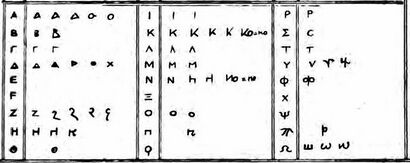
The Kushans adopted elements of the Hellenistic culture of Bactria. They adopted the Greek alphabet to suit their own language (with the additional development of the letter Þ "sh", as in "Kushan") and soon began minting coinage on the Greek model. On their coins they used Greek language legends combined with Pali legends (in the Kharoshthi script), until the first few years of the reign of Kanishka. After the middle of Kanishka's reign, they used Kushan language legends (in an adapted Greek script), combined with legends in Greek (Greek script) and legends in Prakrit (Kharoshthi script).
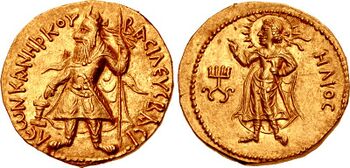
Obverse: Kanishka standing, clad in heavy Kushan coat and long boots, flames emanating from shoulders, holding a standard in his left hand, and making a sacrifice over an altar. Greek legend:
Basileus Basileon Kanishkoy
"[Coin] of Kanishka, king of kings".
The Kushans "adopted many local beliefs and customs, including Zoroastrianism and the two rising religions in the region, the Greek cults and Buddhism".[31] From the time of Vima Takto, many Kushans started adopting aspects of Buddhist culture, and like the Egyptians, they absorbed the strong remnants of the Greek culture of the Hellenistic Kingdoms, becoming at least partly Hellenised. The great Kushan emperor Vima Kadphises, father of Kanishka, embraced Shaivism, a sect of Hinduism, as surmised by coins minted during the period.[5] The following Kushan emperors represented a wide variety of faiths including Buddhism, Zoroastrianism and Hindu Shaivism.
The rule of the Kushans linked the seagoing trade of the Indian Ocean with the commerce of the Silk Road through the long-civilized Indus Valley. At the height of the dynasty, the Kushans loosely ruled a territory that extended to the Aral Sea through present-day Uzbekistan, Afghanistan, Pakistan and northern India.[30]
The loose unity and comparative peace of such a vast expanse encouraged long-distance trade, brought Chinese silks to Rome, and created strings of flourishing urban centers.[30]
التوسع الإقليمي
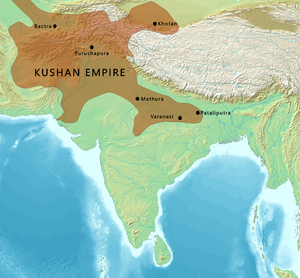
Rosenfield notes that archaeological evidence of a Kushan rule of long duration is present in an area stretching from Surkh Kotal, Begram, the summer capital of the Kushans, Peshawar, the capital under Kanishka I, Taxila, and Mathura, the winter capital of the Kushans.[38] The Kushans introduced for the first time a form of governance which consisted of Kshatrapas (Brahmi:![]()
![]()
![]() , Kṣatrapa, "Satraps") and Mahakshatrapa (Brahmi:
, Kṣatrapa, "Satraps") and Mahakshatrapa (Brahmi:![]()
![]()
![]()
![]()
![]() , Mahakṣatrapa, "Great Satraps").[39]
, Mahakṣatrapa, "Great Satraps").[39]
Other areas of probable rule include Khwarezm and its capital city of Toprak-Kala,[38][40] Kausambi (excavations of Allahabad University),[38] Sanchi and Sarnath (inscriptions with names and dates of Kushan kings),[38] Malwa and Maharashtra,[41] and Odisha (imitation of Kushan coins, and large Kushan hoards).[38]
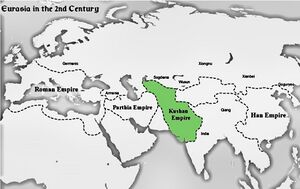
Kushan invasions in the 1st century AD had been given as an explanation for the migration of Indians from the Indian Subcontinent toward Southeast Asia according to proponents of a Greater India theory by 20th-century Indian nationalists. However, there is no evidence to support this hypothesis.[43]
The Rabatak inscription, discovered in 1993, confirms the account of the Hou Hanshu, Weilüe, and inscriptions dated early in the Kanishka era (incept probably AD 127), that large Kushan dominions expanded into the heartland of northern India in the early 2nd century AD.[clarify] Lines 4 to 7 of the inscription describe the cities which were under the rule of Kanishka,[note 5] among which six names are identifiable: Ujjain, Kundina, Saketa, Kausambi, Pataliputra, and Champa (although the text is not clear whether Champa was a possession of Kanishka or just beyond it).[44][note 4][45][46] The Buddhist text Śrīdharmapiṭakanidānasūtra—known via a Chinese translation made in AD 472—refers to the conquest of Pataliputra by Kanishka.[47] A 2nd century stone inscription by a Great Satrap named Rupiamma was discovered in Pauni, south of the Narmada river, suggesting that Kushan control extended this far south, although this could alternatively have been controlled by the Western Satraps.[48]
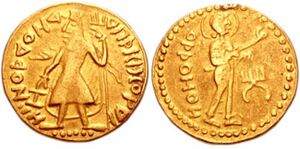
In the East, as late as the 3rd century AD, decorated coins of Huvishka were dedicated at Bodh Gaya together with other gold offerings under the "Enlightenment Throne" of the Buddha, suggesting direct Kushan influence in the area during that period.[50] Coins of the Kushans are found in abundance as far as Bengal, and the ancient Bengali state of Samatata issued coins copied from the coinage of Kanishka I, although probably only as a result of commercial influence.[51][49][52] Coins in imitation of Kushan coinage have also been found abundantly in the eastern state of Orissa.[53]
In the West, the Kushan state covered the Pārata state of Balochistan, western Pakistan, Afghanistan, Kyrgyzstan, Tajikistan, Uzbekistan, and Turkmenistan. Turkmenistan was known for the Kushan Buddhist city of Merv.[38]
Northward, in the 1st century AD, the Kujula Kadphises sent an army to the Tarim Basin to support the city-state of Kucha, which had been resisting the Chinese invasion of the region, but they retreated after minor encounters.[54] In the 2nd century AD, the Kushans under Kanishka made various forays into the Tarim Basin, where they had various contacts with the Chinese. Kanishka held areas of the Tarim Basin apparently corresponding to the ancient regions held by the Yüeh-zhi, the possible ancestors of the Kushan. There was Kushan influence on coinage in Kashgar, Yarkand, and Khotan.[36] According to Chinese chronicles, the Kushans (referred to as Da Yuezhi in Chinese sources) requested, but were denied, a Han princess, even though they had sent presents to the Chinese court. In retaliation, they marched on Ban Chao in AD 90 with a force of 70,000 but were defeated by the smaller Chinese force. Chinese chronicles relate battles between the Kushans and the Chinese general Ban Chao.[46] The Yuezhi retreated and paid tribute to the Chinese Empire. The regions of the Tarim Basin were all ultimately conquered by Ban Chao. Later, during the Yuánchū period (AD 114–120), the Kushans sent a military force to install Chenpan, who had been a hostage among them, as king of Kashgar.[55]
Kushan fortresses
Several Kushan fortresses are known, particularly in Bactria, which were often rebuilt on top of Hellenistic fortifications, as in Kampir Tepe.[56][57] They are often characterised by arrow-shaped loopholes for archers.[56]
The Kushan fortress of Kampir Tepe
The fortress of Ayaz Kala
The fortress of Shahr-e Zuhak.[58]
The temple and fortress of Surkh Kotal
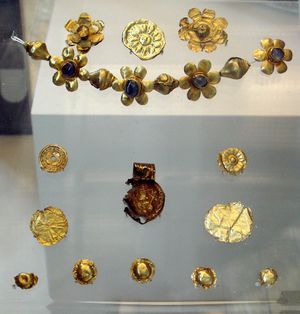
التاريخ
Kushan rulers are recorded for a period of about three centuries, from circa 30 CE to circa 375 CE, until the invasions of the Kidarites. They ruled around the same time as the Western Satraps, the Satavahanas, and the first Gupta Empire rulers.[بحاجة لمصدر]
كوجولا كادفيسس (30–80)
ڤيما تاكتو (80–105)
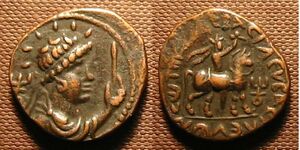
ڤيما كادفيسس (105–127)
ڤيما كادفيسس (Kushan language: Οοημο Καδφισης) was a Kushan emperor from around 90–100 CE, the son of Sadashkana وحفيد كوجولا كادفيسس، وأبو كانيشكا الأول، كما يذكر نقش ربتك.
كانيشكا الأول (127–147)
Mahārāja Rājadhirāja Devaputra Kāṇiṣka
"The Great King, King of Kings, Son of God, Kanishka".[59]
Mathura art, Mathura Museum
The rule of Kanishka the Great, fourth Kushan king, lasted for about 23 years from c. AD 127.[60] Upon his accession, Kanishka ruled a huge territory (virtually all of northern India), south to Ujjain and Kundina and east beyond Pataliputra, according to the Rabatak inscription:
In the year one, it has been proclaimed unto India, unto the whole realm of the governing class, including Koonadeano (Kaundiny, Kundina) and the city of Ozeno (Ozene, Ujjain) and the city of Zageda (Saketa) and the city of Kozambo (Kausambi) and the city of Palabotro (Pataliputra) and as far as the city of Ziri-tambo (Sri-Champa), whatever rulers and other important persons (they might have) he had submitted to (his) will, and he had submitted all India to (his) will.
— Rabatak inscription, Lines 4–8
His territory was administered from two capitals: Purushapura (now Peshawar in northwestern Pakistan) and Mathura, in northern India. He is also credited (along with Raja Dab) for building the massive, ancient Fort at Bathinda (Qila Mubarak), in the modern city of Bathinda, Indian Punjab.[بحاجة لمصدر]
The Kushans also had a summer capital in Bagram (then known as Kapisa), where the "Begram Treasure", comprising works of art from Greece to China, has been found. According to the Rabatak inscription, Kanishka was the son of Vima Kadphises, the grandson of Sadashkana, and the great-grandson of Kujula Kadphises. Kanishka's era is now generally accepted to have begun in 127 on the basis of Harry Falk's ground-breaking research.[61][62] Kanishka's era was used as a calendar reference by the Kushans for about a century, until the decline of the Kushan realm.[بحاجة لمصدر]
هوڤيشكا (140–183)
Huvishka (Kushan: Οοηϸκι, "Ooishki") was a Kushan emperor from the death of Kanishka (assumed on the best evidence available to be in 150) until the succession of Vasudeva I about thirty years later. His rule was a period of retrenchment and consolidation for the Empire. In particular he devoted time and effort early in his reign to the exertion of greater control over the city of Mathura.
ڤاسودڤا الأول (191–225)
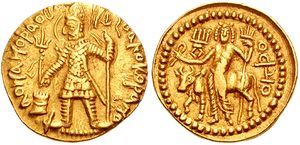
Vasudeva I (Kushan: Βαζοδηο "Bazodeo", Chinese: 波調 "Bodiao") was the last of the "Great Kushans". Named inscriptions dating from year 64 to 98 of Kanishka's era suggest his reign extended from at least AD 191 to 225. He was the last great Kushan emperor, and the end of his rule coincides with the invasion of the Sasanians as far as northwestern India, and the establishment of the Indo-Sasanians or Kushanshahs in what is nowadays Afghanistan, Pakistan and northwestern India from around AD 240.[بحاجة لمصدر]
Vāsishka (c. 247 – c. 267)
Vāsishka was a Kushan emperor who seems to have had a 20-year reign following Kanishka II. His rule is recorded at Mathura, in Gandhara and as far south as Sanchi (near Vidisa), where several inscriptions in his name have been found, dated to the year 22 (the Sanchi inscription of "Vaksushana" – i.e., Vasishka Kushana) and year 28 (the Sanchi inscription of Vasaska – i.e., Vasishka) of a possible second Kanishka era.[63][64]
Little Kushans (AD 270 – 350)
Following territory losses in the west (Bactria lost to the Kushano-Sasanians), and in the east (loss of Mathura to the Gupta Empire), several "Little Kushans" are known, who ruled locally in the area of Punjab with their capital at Taxila: Vasudeva II (270 – 300), Mahi (300 – 305), Shaka (305 – 335) and Kipunada (335 – 350).[63] They probably were vassals of the Gupta Empire, until the invasion of the Kidarites destroyed the last remains of Kushan rule.[63]
آلهة الكوشان
بعض الآلهة على العملات
Mahasena on a coin of هوڤيشكا.
Gold coin of Kanishka I, with a depiction of the Buddha, with the legend "Boddo" بخط يوناني. Ahin Posh.
الكوشان والبوذية
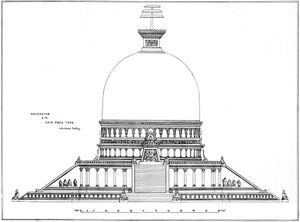
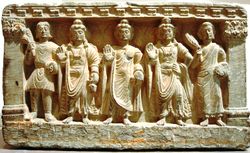
The Kushans inherited the Greco-Buddhist traditions of the Indo-Greek Kingdom they replaced, and their patronage of Buddhist institutions allowed them to grow as a commercial power.[68] Between the mid-1st century and the mid-3rd century, Buddhism, patronised by the Kushans, extended to China and other Asian countries through the Silk Road.[بحاجة لمصدر]
Kanishka is renowned in Buddhist tradition for having convened a great Buddhist council in Kashmir. Along with his predecessors in the region, the Indo-Greek king Menander I (Milinda) and the Indian emperors Ashoka and Harsha Vardhana, Kanishka is considered by Buddhism as one of its greatest benefactors.[بحاجة لمصدر]
During the 1st century AD, Buddhist books were being produced and carried by monks, and their trader patrons. Also, monasteries were being established along these land routes that went from China and other parts of Asia. With the development of Buddhist books, it caused a new written language called Gandhara. Gandhara consists of eastern Afghanistan and northern Pakistan. Scholars are said to have found many Buddhist scrolls that contained the Gandhari language.[69]
The reign of Huvishka corresponds to the first known epigraphic evidence of the Buddha Amitabha, on the bottom part of a 2nd-century statue which has been found in Govindo-Nagar, and now at the Mathura Museum. The statue is dated to "the 28th year of the reign of Huvishka", and dedicated to "Amitabha Buddha" by a family of merchants. There is also some evidence that Huvishka himself was a follower of Mahayana Buddhism. A Sanskrit manuscript fragment in the Schøyen Collection describes Huvishka as one who has "set forth in the Mahāyāna."[70]
The 12th century historical chronicle Rajatarangini mentions in detail the rule of the Kushan kings and their benevolence towards Buddhism:[71][72]
Then there ruled in this very land the founders of cities called after their own appellations the three kings named Huska, Juska and Kaniska (...) These kings albeit belonging to the Turkish race found refuge in acts of piety; they constructed in Suskaletra and other places monasteries, Caityas and similar edificies. During the glorious period of their regime the kingdom of Kashmir was for the most part an appanage of the Buddhists who had acquired lustre by renunciation. At this time since the Nirvana of the blessed Sakya Simha in this terrestrial world one hundred fifty years, it is said, had elapsed. And a Bodhisattva was in this country the sole supreme ruler of the land; he was the illustrious Nagarjuna who dwelt in Sadarhadvana.
الفن الكوشاني
The art and culture of Gandhara, at the crossroads of the Kushan hegemony, developed the traditions of Greco-Buddhist art and are the best known expressions of Kushan influences to Westerners. Several direct depictions of Kushans are known from Gandhara, where they are represented with a tunic, belt and trousers and play the role of devotees to the Buddha, as well as the Bodhisattva and future Buddha Maitreya.[74]
According to Benjamin Rowland, the first expression of Kushan art appears at Khalchayan at the end of the 2nd century BC.[74] It is derived from Hellenistic art, and possibly from the art of the cities of Ai-Khanoum and Nysa, and clearly has similarities with the later Art of Gandhara, and may even have been at the origin of its development.[74] Rowland particularly draws attention to the similarity of the ethnic types represented at Khalchayan and in the art of Gandhara, and also in the style of portraiture itself.[74] For example, Rowland find a great proximity between the famous head of a Yuezhi prince from Khalchayan, and the head of Gandharan Bodhisattvas, giving the example of the Gandharan head of a Bodhisattva in the Philadelphia Museum of Art.[74] The similarity of the Gandhara Bodhisattva with the portrait of the Kushan ruler Heraios is also striking.[74] According to Rowland the Bactrian art of Khalchayan thus survived for several centuries through its influence in the art of Gandhara, thanks to the patronage of the Kushans.[74]
During the Kushan Empire, many images of Gandhara share a strong resemblance to the features of Greek, Syrian, Persian and Indian figures. These Western-looking stylistic signatures often include heavy drapery and curly hair,[75] representing a composite (the Greeks, for example, often possessed curly hair).[بحاجة لمصدر]
As the Kushans took control of the area of Mathura as well, the Art of Mathura developed considerably, and free-standing statues of the Buddha came to be mass-produced around this time, possibly encouraged by doctrinal changes in Buddhism allowing to depart from the aniconism that had prevailed in the Buddhist sculptures at Mathura, Bharhut or Sanchi from the end of the 2nd century BC.[76] The artistic cultural influence of kushans declined slowly due to Hellenistic Greek and Indian influences.[77]
Maitreya, with Kushan devotee couple. 2nd century Gandhara.
The "Kanishka casket", with the Buddha surrounded by Brahma and Indra, and Kanishka on the lower part, 127.
Kushan devotee in the traditional costume with tunic and boots, 2nd century, Gandhara.
Butkara stupa under the Kushans.[78]
النظام النقدي للكوشان
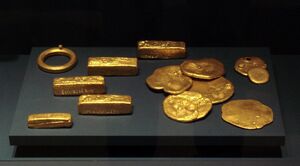
The Kushans used gold ingots as part of their monetary system, as shown by the gold treasure discovered in 1972 in Dalverzin Tepe.[79] The main objects from the treasure were circular and parallelepipedic ingots, followed by various decorative objects and jewellery items.[79] The circular ingots used to be progressively cut up as needed, depending on the amount required for a transaction.[79] On the contrary, the parallelepipedic ingots were used to stock wealth in a not-divisible form; these ingots bear inscriptions in Kharoshthi mentioning their weight and the god Mitra (protector of contractual relations)[79] These ingots are all attributed to the monetary system of the Kushan Empire.[79]
The coinage of the Kushans was abundant and an important tool of propaganda in promoting each Kushan ruler.[80] One of the names for Kushan coins was Dinara, which ultimately came from the Roman name Denarius aureus.[80][81][82] The coinage of the Kushans was copied as far as the Kushano-Sasanians in the west, and the kingdom of Samatata in Bengal to the east. The coinage of the Gupta Empire was also initially derived from the coinage of the Kushan Empire, adopting its weight standard, techniques and designs, following the conquests of Samudragupta in the northwest.[83][84][85] The imagery on Gupta coins then became more Indian in both style and subject matter compared to earlier dynasties, where Greco-Roman and Persian styles were mostly followed.[84][86]
It has long been suggested that the gold contained in Kushan coins was ultimately of Roman origin, and that Roman coins were imported as a consequence of trade and melted in India to mint Kushan coins. However, a recent archaeometallurgical study of trace elements through proton activation analysis has shown that Kushan gold contains high concentrations of platinum and palladium, which rules out the hypothesis of a Roman provenance. To this day, the origin of Kushan gold remains unknown.[87]
الإتصال بروما
Several Roman sources describe the visit of ambassadors from the Kings of Bactria and India during the 2nd century, probably referring to the Kushans.[88]
Historia Augusta, speaking of Emperor Hadrian (117–138) tells:[88]
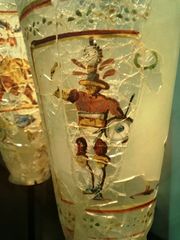
Reges Bactrianorum legatos ad eum, amicitiae petendae causa, supplices miserunt "The kings of the Bactrians sent supplicant ambassadors to him, to seek his friendship."[88]
Also in 138, according to Aurelius Victor (Epitome‚ XV, 4), and Appian (Praef., 7), Antoninus Pius, successor to Hadrian, received some Indian, Bactrian, and Hyrcanian ambassadors.[88]
Some Kushan coins have an effigy of "Roma", suggesting a strong level of awareness and some level of diplomatic relations.[88]
The summer capital of the Kushan Empire in Begram has yielded a considerable amount of goods imported from the Roman Empire—in particular, various types of glassware. The Chinese described the presence of Roman goods in the Kushan realm:
"Precious things from Da Qin [the Roman Empire] can be found there [in Tianzhu or Northwestern India], as well as fine cotton cloths, fine wool carpets, perfumes of all sorts, sugar candy, pepper, ginger, and black salt."
— Hou Hanshu[89]
Parthamaspates of Parthia, a client of Rome and ruler of the kingdom of Osroene, is known to have traded with the Kushan Empire, goods being sent by sea and through the Indus River.[90]
- انظر أيضاً: التجارة الرومانية مع الهند
الإتصال بالصين
قالب:Continental Asia in 100 CE During the 1st and 2nd century AD, the Kushan Empire expanded militarily to the north, putting them at the center of the profitable Central Asian commerce. They are related to have collaborated militarily with the Chinese against nomadic incursion, particularly when they allied with the Han dynasty general Ban Chao against the Sogdians in 84, when the latter were trying to support a revolt by the king of Kashgar.[91] Around 85, they also assisted the Chinese general in an attack on Turpan, east of the Tarim Basin.
In recognition for their support to the Chinese, the Kushans requested a Han princess, but were denied,[91][94] even after they had sent presents to the Chinese court. In retaliation, they marched on Ban Chao in 86 with a force of 70,000, but were defeated by a smaller Chinese force.[91][94] The Yuezhi retreated and paid tribute to the Chinese Empire during the reign of emperor He of Han (89–106).
The Kushans are again recorded to have sent presents to the Chinese court in 158–159 during the reign of Emperor Huan of Han.
Following these interactions, cultural exchanges further increased, and Kushan Buddhist missionaries, such as Lokaksema, became active in the Chinese capital cities of Luoyang and sometimes Nanjing, where they particularly distinguished themselves by their translation work. They were the first recorded promoters of Hinayana and Mahayana scriptures in China, greatly contributing to the Silk Road transmission of Buddhism.
الإضمحلال
Kushano-Sassanians
After the death of Vasudeva I in 225, the Kushan empire split into western and eastern halves. The Western Kushans (in Afghanistan) were soon subjugated by the Persian Sasanian Empire and lost Sogdiana, Bactria, and Gandhara to them. The Sassanian king Shapur I (240–270) claims in his Naqsh-e Rostam inscription possession of the territory of the Kushans (Kūšān šahr) as far as "Purushapura" (Peshawar), suggesting he controlled Bactria and areas as far as the Hindu-Kush or even south of it:[95]
I, the Mazda-worshipping lord, Shapur, king of kings of Iran and An-Iran... (I) am the Master of the Domain of Iran (Ērānšahr) and possess the territory of Persis, Parthian... Hindestan, the Domain of the Kushan up to the limits of Paškabur and up to Kash, Sughd, and Chachestan.
This is also confirmed by the Rag-i-Bibi inscription in modern Afghanistan.[95]
The Sasanians deposed the Western dynasty and replaced them with Persian vassals known as the Kushanshas (in Bactrian on their coinage: KΟÞANΟ ÞAΟ Koshano Shao)[96] also called Indo-Sasanians or Kushano-Sasanians. The Kushano-Sasanians ultimately became very powerful under Hormizd I Kushanshah (277–286) and rebelled against the Sasanian Empire, while continuing many aspects of the Kushan culture, visible in particular in their titulature and their coinage.[97]
"Little Kushans" and Gupta suzerainty
The expression Devaputra Shāhi Shāhānu Shāhi in Middle Brahmi in the Allahabad pillar (Line 23), claimed by Samudragupta to be under his dominion.[98]
The Eastern Kushan kingdom, also known as the "Little Kushans", was based in the Punjab. Around 270 their territories on the Gangetic plain became independent under local dynasties such as the Yaudheyas. Then in the mid-4th century they were subjugated by the Gupta Empire under Samudragupta.[101] In his inscription on the Allahabad pillar Samudragupta proclaims that the Dēvaputra-Shāhi-Shāhānushāhi (referring to the last Kushan rulers, being a deformation of the Kushan regnal titles Devaputra, Shao and Shaonanoshao: "Son of God, King, King of Kings") are now under his dominion, and that they were forced to "self-surrender, offering (their own) daughters in marriage and a request for the administration of their own districts and provinces".[102][101][103] This suggests that by the time of the Allahabad inscription the Kushans still ruled in Punjab, but under the suzerainty of the Gupta Emperor.[101]
Numimastics indicate that the coinage of the Eastern Kushans was much weakened: silver coinage was abandoned altogether, and gold coinage was debased. This suggests that the Eastern Kushans had lost their central trading role on the trade routes that supplied luxury goods and gold.[101] Still, the Buddhist art of Gandhara continued to flourish, and cities such as Sirsukh near Taxila were established.[101]
Sasanian, Kidarite and Alchon invasions
In the east around 350, Shapur II regained the upper hand against the Kushano-Sasanian Kingdom and took control of large territories in areas now known as Afghanistan and Pakistan, possibly as a consequence of the destruction of the Kushano-Sasanians by the Chionites.[104] The Kushano-Sasanian still ruled in the north. Important finds of Sasanian coinage beyond the Indus River in the city of Taxila only start with the reigns of Shapur II (r.309-379) and Shapur III (r.383-388), suggesting that the expansion of Sasanian control beyond the Indus was the result of the wars of Shapur II "with the Chionites and Kushans" in 350-358 as described by Ammianus Marcellinus.[105] They probably maintained control until the rise of the Kidarites under their ruler Kidara.[105]
In 360 a Kidarite Hun named Kidara overthrew the Kushano-Sasanians and remnants of the old Kushan dynasty, and established the Kidarite Kingdom. The Kushan style of Kidarite coins indicates they claimed Kushan heritage. The Kidarite seem to have been rather prosperous, although on a smaller scale than their Kushan predecessors. East of the Punjab, the former eastern territories of the Kushans were controlled by the mighty Gupta Empire.[بحاجة لمصدر]
The remnants of Kushan culture under the Kidarites in the northwest were ultimately wiped out in the end of the 5th century by the invasions of the Alchon Huns (sometimes considered as a branch of the Hephthalites), and later the Nezak Huns.[بحاجة لمصدر]
الحكام
One of the most recent list of rulers with dates is as follows:[106]
- Heraios (c. 1 - 30), first Kushan ruler, generally Kushan ruling period is disputed
- Kujula Kadphises (c. 30 - c. 80)
- Vima Takto, (c. 80 - c. 105) alias Soter Megas or "Great Saviour."
- Vima Kadphises (c. 105 - c. 127) the first great Kushan emperor
- Kanishka I (127 - c. 147)
- Vāsishka (c. 151 - c. 155)
- Huvishka (c. 155 - c. 187)
- Vasudeva I (c. 191 - to at least 230), the last of the great Kushan emperors
- Kanishka II (c. 226 - 240)
- Vashishka (c. 240 - 250)
- Kanishka III (c. 255 - 275)
- Vasudeva II (c. 290 - 310)
- Vasudeva III reported son of Vasudeva III,a King, uncertain.
- Vasudeva IV reported possible child of Vasudeva III,ruling in Kandahar, uncertain
- Vasudeva of Kabul reported Possible child of Vasudeva IV,ruling in Kabul, uncertain.
- Vasudeva IV reported possible child of Vasudeva III,ruling in Kandahar, uncertain
- Vasudeva III reported son of Vasudeva III,a King, uncertain.
- Chhu (c. 310? - 325?)
- شاكا الأول (c. 325 - 345)
- كيپونادا (ح. 350 - 375)
معرض الصور
انظر ايضاً
تاريخ جنوب آسيا | |||||||||||||||||||||||||
|---|---|---|---|---|---|---|---|---|---|---|---|---|---|---|---|---|---|---|---|---|---|---|---|---|---|
| العصر الحجري | 70,000–3300 ق.م. | ||||||||||||||||||||||||
| • ثقافة مهرگره | • 7000–3300 ق.م. | ||||||||||||||||||||||||
| حضارة وادي الإندوس | 3300–1700 ق.م. | ||||||||||||||||||||||||
| ثقافة هرپـّان المتأخرة | 1700–1300 ق.م. | ||||||||||||||||||||||||
| الفترة الڤيدية | 1500–500 ق.م. | ||||||||||||||||||||||||
| العصر الحديدي | 1200–300 ق.م. | ||||||||||||||||||||||||
| • مهاجناپادا | • 700–300 ق.م. | ||||||||||||||||||||||||
| • امبراطورية ماگادا | • 545 ق.م. - 550 | ||||||||||||||||||||||||
| • امبراطورية موريا | • 321–184 ق.م. | ||||||||||||||||||||||||
| الممالك الوسيطة | 250 ق.م.–1279 م | ||||||||||||||||||||||||
| • امبراطورية چولا | • 250 ق.م.–1070 م | ||||||||||||||||||||||||
| • ساتاڤاهانا | • 230 ق.م.–220 م | ||||||||||||||||||||||||
| • امبراطورية كوشان | • 60–240 | ||||||||||||||||||||||||
| • امبراطورية گوپتا | • 280–550 | ||||||||||||||||||||||||
| • امبراطورية پالا | • 750–1174 | ||||||||||||||||||||||||
| • أسرة چالوكيا | • 543–753 | ||||||||||||||||||||||||
| • راشتراكوتا | • 753–982 | ||||||||||||||||||||||||
| • امبراطورية چالوكيا الغربية | • 973–1189 | ||||||||||||||||||||||||
| • مملكة هويسالا | 1040–1346 | ||||||||||||||||||||||||
| • امبراطورية كاكاتيا | 1083–1323 | ||||||||||||||||||||||||
| السلطنات الإسلامية | 1206–1596 | ||||||||||||||||||||||||
| • سلطنة دلهي | • 1206–1526 | ||||||||||||||||||||||||
| • سلطنات الدكن | • 1490–1596 | ||||||||||||||||||||||||
| مملكة أهوم | 1228–1826 | ||||||||||||||||||||||||
| امبراطورية ڤيجايانگرا | 1336–1646 | ||||||||||||||||||||||||
| سلطنة المغول | 1526–1858 | ||||||||||||||||||||||||
| امبراطورية ماراثا | 1674–1818 | ||||||||||||||||||||||||
| سلطنة دراني | 1747–1823 | ||||||||||||||||||||||||
| اتحاد السيخ | 1716–1799 | ||||||||||||||||||||||||
| امبراطورية السيخ | 1801–1849 | ||||||||||||||||||||||||
| |||||||||||||||||||||||||
| شركة الهند الشرقية البريطانية | 1757–1858 | ||||||||||||||||||||||||
| الراج البريطاني | 1858–1947 | ||||||||||||||||||||||||
| الدول المعاصرة | 1947–الحاضر | ||||||||||||||||||||||||
| تواريخ الأمم بنگلادش • بوتان • جمهورية الهند المالديڤ • نيپال • پاكستان • سري لانكا | |||||||||||||||||||||||||
| تواريخ إقليمية أسام • بلوشستان • البنغال هيماچال پرادش • اوريسا • المناطق الپاكستانية شمال الهند • جنوب الهند • التبت | |||||||||||||||||||||||||
| تآريخ متخصصة العملات • الأسرات • الاقتصاد علم الهنديات • اللغة • الأدب • البحري العسكري • العلم والتكنولوجيا • خط زمني | |||||||||||||||||||||||||
- Gujjar
- Yuezhi
- Pre-Islamic period of Afghanistan
- Greco-Bactrian Kingdom
- Indo-Greek Kingdom
- Indo-Scythians
- Indo-Parthian Kingdom
- Indo-Sassanid
- Greco-Buddhism
- Kushanshahr
الهامش
- ^ "نقش ربتك يدعي أن في السنة الأولى من عهد كانيشكا الأول، كان امتد سلطانه إلى الهند، وكل الدول التابعةوإلى مدن مختلفة مثل كوناديانو (كوندينا)، اوزنو (اوجـّاين)، كوزامبو (كاوسامبي)، زگدو (ساكـِتا)، پلابوترو (پتاليپوترا) و زيري-تامبو (جنجگير-چامپا). هذه المدن تقع إلى الشرق والجنوب من ماثورا، التي وصل إليها فتوحات ڤيما المظفرة. ولذلك فمن المحتم أن يكون كانشكا الأول، نفسه، هو من استولى عليهم أو أخضعهم." "Ancient Indian Inscriptions", S. R. Goyal, p. 93. انظر أيضاً تحليل سيمز-وليامز و J.Cribb، صاحبي الدور المحوري في فك الرموز: "A new Bactrian inscription of Kanishka the Great"، في "Silk Road Art and Archaeology" No4, 1995-1996. Also Mukherjee B.N. "The Great Kushanan Testament", Indian Museum Bulletin. كذلك Mukherjee B.N. "The Great Kushanan Testament", Indian Museum Bulletin.
- ^ Falk 2001, p. 133.
- ^ Rosenfield 1967, pp. 7 & 8.
- ^ أ ب Wurm, Stephen A.; Mühlhäusler, Peter; Tryon, Darrell T. (11 February 2011). Atlas of Languages of Intercultural Communication in the Pacific, Asia, and the Americas: Vol I: Maps. Vol II: Texts (in الإنجليزية). Walter de Gruyter. ISBN 978-3-11-081972-4.
- ^ أ ب Bopearachchi 2007, p. 45.
- ^ Liu 2010, p. 61.
- ^ Golden 1992, p. 56.
- ^ "Afghanistan: Central Asian and Sassanian Rule, ca. 150 B.C.-700 A.D." Library of Congress Country Studies. 1997. Archived from the original on 15 February 2013. Retrieved 16 August 2012.
- ^ Turchin, Peter; Adams, Jonathan M.; Hall, Thomas D (December 2006). "East-West Orientation of Historical Empires". Journal of World-Systems Research. 12 (2): 222. ISSN 1076-156X. Retrieved 12 September 2016.
- ^ Taagepera, Rein (1979). "Size and Duration of Empires: Growth-Decline Curves, 600 B.C. to 600 A.D.". Social Science History. 3 (3/4): 132. doi:10.2307/1170959. JSTOR 1170959.
- ^ Kushan Empire (ca. 2nd century B.C.–3rd century A.D.) | Thematic Essay | Timeline of Art History | The Metropolitan Museum of Art
- ^ Yatsenko, Sergey A. (2012). "Yuezhi on Bactrian Embroidery from Textiles Found at Noyon uul, Mongolia" (PDF). The Silk Road. 10.
- ^ Francfort, Henri-Paul (1 January 2020). "Sur quelques vestiges et indices nouveaux de l'hellénisme dans les arts entre la Bactriane et le Gandhāra (130 av. J.-C.-100 apr. J.-C. environ)". Journal des Savants (in الإنجليزية): 26–27.
- ^ For romanized spelling Yueh-chi see: Keay, p. 110.
- ^ Kushan Empire (ca. 2nd century B.C.–3rd century A.D.) | Thematic Essay | Timeline of Art History | The Metropolitan Museum of Art
- ^ Keay, p. 110.
- ^ أ ب خطأ استشهاد: وسم
<ref>غير صحيح؛ لا نص تم توفيره للمراجع المسماةJMR7 - ^ Banerjee, Gauranga Nath (1920). Hellenism in ancient India. Calcutta: Published by the Author; New York: Oxford University Press. p. 92.
- ^ أ ب Wink 2002, p. 57.
- ^ Rajatarangini Pandit, Ranjit Sitaram (1935). River Of Kings (rajatarangini). pp. I168–I173.
Then there ruled in this very land the founders of cities called after their own appellations the three kings named Huska, Juska and Kaniska (...) These kings albeit belonging to the Turkish race found refuge in acts of piety; they constructed in Suskaletra and other places monasteries, Caityas and similar edificies.
- ^ Rosenfield 1967, p. 8
- ^ KHALCHAYAN – Encyclopaedia Iranica. Figure 1.
- ^ أ ب Grousset 1970, pp. 31-32
- ^ Lebedynsky 2006, p. 62.
- ^ Lebedynsky 2006, p. 15.
- ^ Fedorov, Michael (2004). "On the origin of the Kushans with reference to numismatic and anthropological data" (PDF). Oriental Numismatic Society. 181 (Autumn): 32. Archived from the original (PDF) on 6 October 2019. Retrieved 6 October 2019.قالب:Free access
- ^ أ ب Abdullaev, Kazim (2007). "Nomad Migration in Central Asia (in After Alexander: Central Asia before Islam)". Proceedings of the British Academy. 133: 89.
The knights in chain-mail armour have analogies in the Khalchayan reliefs depicting a battle of the Yuezhi against a Saka tribe (probably the Sakaraules). Apart from the chain-mail armour worn by the heavy cavalry of the enemies of the Yuezhi, the other characteristic sign of these warriors is long side-whiskers (...) We think it is possible to identify all these grotesque personages with long side-whiskers as enemies of the Yuezhi and relate them to the Sakaraules (...) Indeed these expressive figures with side-whiskers differ greatly from the tranquil and majestic faces and poses of the Yuezhi depictions.
- ^ Hill 2009, p. 29.
- ^ Chavannes 1907, pp. 190–192.
- ^ أ ب ت ث Benjamin, Craig (16 April 2015). The Cambridge World History: Volume 4, A World with States, Empires and Networks 1200 BCE–900 CE. Cambridge University Press. p. 477 ff. ISBN 978-1-316-29830-5.
It is generally agreed that the Kushans were one of the five tribes of the Yuezhi...
- ^ أ ب Starr, S. Frederick (2013). Lost Enlightenment: Central Asia's Golden Age from the Arab Conquest to Tamerlane. Princeton, NJ: Princeton University Press. p. 53.
- ^ O'Brien, Patrick Karl; Press, Oxford University (2002). Atlas of World History. Oxford University Press. p. 46. ISBN 978-0-19-521921-0.
- ^ خطأ استشهاد: وسم
<ref>غير صحيح؛ لا نص تم توفيره للمراجع المسماةAADC - ^ Goyal 2005, p. 93. "The Rabatak inscription claims that in the year 1 Kanishka I's authority was proclaimed in India, in all the satrapies and in different cities like Koonadeano (Kundina), Ozeno (Ujjain), Kozambo (Kausambi), Zagedo (Saketa), Palabotro (Pataliputra), and Ziri-Tambo (Janjgir-Champa). These cities lay to the east and south of Mathura, up to which locality Wima had already carried his victorious arm. Therefore they must have been captured or subdued by Kanishka I himself."
- ^ Mukherjee, B.N. (1995). "The Great Kushana Testament". Indian Museum Bulletin. Calcutta.
- ^ أ ب Cribb, Joe (1984). "The Sino-Kharosthi coins of Khotan part 2". Numismatic Chronicle. pp. 129–152.
- ^ Schwartzberg, Joseph E. (1978). A Historical atlas of South Asia. Chicago: University of Chicago Press. p. 145, map XIV.1(g). ISBN 0226742210.
- ^ أ ب ت ث ج ح Rosenfield 1993, p. 41.
- ^ Sailendra Nath Sen 1999, p. 188.
- ^ Basham, Arthur Llewellyn (1968). Papers on the Date of Kaniṣka: Submitted to the Conference on the Date of Kaniṣka, London, 20-22 April 1960. Brill Archive. p. 414.
- ^ Rosenfield 1993, p. 41. "Malwa and Maharashtra, for which it is speculated that the Kushans had an alliance with the Western Kshatrapas".
- ^ خطأ استشهاد: وسم
<ref>غير صحيح؛ لا نص تم توفيره للمراجع المسماةA Brief History of India - ^ Hall, D.G.E. (1981). A History of South-East Asia, Fourth Edition. Hong Kong: Macmillan Education Ltd. p. 17. ISBN 0-333-24163-0.
- ^ Goyal 2005, p. 93. "The Rabatak inscription claims that in the year 1 Kanishka I's authority was proclaimed in India, in all the satrapies and in different cities like Koonadeano (Kundina), Ozeno (Ujjain), Kozambo (Kausambi), Zagedo (Saketa), Palabotro (Pataliputra) and Ziri-Tambo (Janjgir-Champa). These cities lay to the east and south of Mathura, up to which locality Wima had already carried his victorious arm. Therefore they must have been captured or subdued by Kanishka I himself."
- ^ Sims-Williams, Nicholas. "Bactrian Documents from Ancient Afghanistan". Archived from the original on 10 June 2007. Retrieved 24 May 2007.
- ^ أ ب Rezakhani 2017b, p. 201.
- ^ Puri 1999, p. 258.
- ^ Mukherjee, Bratindra Nath (1988). The rise and fall of the Kushāṇa Empire. Firma KLM. p. 269. ISBN 9780836423938.
- ^ أ ب "Samatata coin". The British Museum.
- ^ British Museum display, Asian Art room.[استشهاد ناقص]
- ^ Sengupta, Nitish (2011). Land of Two Rivers: A History of Bengal from the Mahabharata to Mujib. Penguin UK. p. 39. ISBN 978-81-8475-530-5.
- ^ Numismatic Digest. Numismatic Society of Bombay. 2012. p. 29.
As far as gold coins in Bengal are concerned it was Samatata or South-eastern Bengal which issued gold coins ... This trend of imitating Kushan gold continued and had major impact on the currency pattern of this south-eastern zone.
- ^ Ray, N. R. (1982). Sources of the History of India: Bihar, Orissa, Bengal, Manipur, and Tripura. Institute of Historical Studies. p. 194.
A large number of Kushan and Puri Kushan coins have been discovered from different parts of Orissa. Scholars have designated the Puri Kushan coins as the Oriya Kushan coins. Though the coins are the imitations of Kushan coins they have been abundantly found from different parts of Orissa.
- ^ Grousset 1970, pp. 45-46.
- ^ Hill 2009, p. 43.
- ^ أ ب RUSANOV, D. V. (1994). "The Fortification of Kampir-Tepe: A Reconstruction". Bulletin of the Asia Institute. 8: 155–160. ISSN 0890-4464. JSTOR 24048772.
- ^ Rtveladze, E (2019). Alexandria on the Oxus - Kampir Tepe: A fortress city on the Oxus shore. Tashkent.
{{cite book}}: CS1 maint: location missing publisher (link) - ^ Lee, Jonathan L. (8 March 2022). Afghanistan: A History from 1260 to the Present (in الإنجليزية). Reaktion Books. ISBN 978-1-78914-019-4.
- ^ Puri, Baij Nath (1965). India under the Kushāṇas. Bharatiya Vidya Bhavan.
- ^ Bracey, Robert (2017). "The Date of Kanishka since 1960". Indian Historical Review. 44 (1): 21–61. doi:10.1177/0376983617694717. S2CID 149016806.
- ^ Falk 2001, pp. 121–136.
- ^ Falk 2004, pp. 167–176.
- ^ أ ب ت Rezakhani 2017b, p. 203.
- ^ Rosenfield 1967, p. 57
- ^ Metropolitan Museum of Art exhibition
- ^ Metropolitan Museum of Art exhibition
- ^ Metropolitan Museum of Art exhibition
- ^ Liu 2010, p. 42.
- ^ Liu 2010, p. 58.
- ^ Neelis, Jason. Early Buddhist Transmission and Trade Networks. 2010. p. 141
- ^ Sailendra Nath Sen 1999, pp. 199–200.
- ^ أ ب Mahajan, V.D (2016). Ancient India. S. Chand Publishing. p. 330. ISBN 978-93-5253-132-5.
- ^ Pandit, Ranjit Sitaram (1935). River Of Kings (rajatarangini). p. I168–I173.
- ^ أ ب ت ث ج ح خ د Rowland, Benjamin (1971). "Graeco-Bactrian Art and Gandhāra: Khalchayan and the Gandhāra Bodhisattvas". Archives of Asian Art. 25: 29–35. ISSN 0066-6637. JSTOR 20111029.
- ^ Birmingham Museum of Art (2010). Birmingham Museum of Art: guide to the collection. [Birmingham, Ala]: Birmingham Museum of Art. p. 51. ISBN 978-1-904832-77-5.
- ^ Stoneman, Richard (2019). The Greek Experience of India: From Alexander to the Indo-Greeks. Princeton University Press. pp. 439–440. ISBN 9780691185385.
- ^ Sailendra Nath Sen 1999, p. 202.
- ^ Faccena, p. 77 and following.
- ^ أ ب ت ث ج Ilyasov, Djangar (2022). Splendeurs des oasis d'Ouzbékistan. Paris: Louvre Editions. pp. 68–70. ISBN 978-8412527858.
- ^ أ ب Sen, Sudipta (2019). Ganges: The Many Pasts of an Indian River. Yale University Press. p. 205. ISBN 9780300119169.
- ^ Vanaja, R. (1983). Indian Coinage. National Museum.
Known by the term Dinars in early Gupta inscriptions, their gold coinage was based on the weight standard of the Kushans i.e. 8 gms/120 grains. It was replaced in the time of Skandagupta by a standard of 80 ratis or 144 grains.
- ^ Mookerji, Radhakumud (1997). The Gupta Empire. Motilal Banarsidass Publ. p. 31. ISBN 9788120804401.
- ^ Gupta inscriptions using the term "Dinara" for money: No 5-9, 62, 64 in Fleet, John Faithfull (1960). Inscriptions Of The Early Gupta Kings And Their Successors.
- ^ أ ب Mookerji, Radhakumud (1997). The Gupta Empire. Motilal Banarsidass Publ. p. 30. ISBN 9788120804401.
- ^ Higham, Charles (2014). Encyclopedia of Ancient Asian Civilizations. Infobase Publishing. p. 82. ISBN 9781438109961.
- ^ Pal, Pratapaditya (1986). Indian Sculpture. Volume I: Circa 500 B.C.-A.D. 700. Los Angeles County Museum of Art with University of California Press. pp. 73, 78. ISBN 9780520059917.
- ^ Reden, Sitta (2 December 2019). Handbook of Ancient Afro-Eurasian Economies: Volume 1: Contexts (in الإنجليزية). Walter de Gruyter GmbH & Co KG. p. 505. ISBN 978-3-11-060494-8.
- ^ أ ب ت ث ج McLaughlin, Raoul (2010). Rome and the Distant East: Trade Routes to the Ancient Lands of Arabia, India and China. A&C Black. p. 131. ISBN 9781847252357.
- ^ Hill 2009, p. 31.
- ^ Ellerbrock, Uwe (2021). The Parthians: The Forgotten Empire. Routledge. p. 61. ISBN 978-1-000-35848-3.
- ^ أ ب ت de Crespigny, Rafe. (2007). A Biographical Dictionary of Later Han to the Three Kingdoms (23–220 AD). Leiden: Koninklijke Brill. page 5-6. ISBN 90-04-15605-4.
- ^
 Joe Cribb, 1974, "Chinese lead ingots with barbarous Greek inscriptions in Coin Hoards" pp.76–8 [1]
Joe Cribb, 1974, "Chinese lead ingots with barbarous Greek inscriptions in Coin Hoards" pp.76–8 [1]
- ^ "安息铅币(正面、背面)". www.gansumuseum.com. Gansu Museum.
- ^ أ ب Torday, Laszlo. (1997). Mounted Archers: The Beginnings of Central Asian History. Durham: The Durham Academic Press. page 393. ISBN 1-900838-03-6.
- ^ أ ب ت Rezakhani 2017b, pp. 202–203.
- ^ Rezakhani 2017b, p. 204.
- ^ Rezakhani 2017b, pp. 200–210.
- ^ Eraly, Abraham (2011). The First Spring: The Golden Age of India. Penguin Books India. p. 38. ISBN 9780670084784.
- ^ Errington, Elizabeth; Curtis, Vesta Sarkhosh (2007). From Persepolis to the Punjab: Exploring Ancient Iran, Afghanistan and Pakistan. British Museum Press. p. 88. ISBN 9780714111650.
In the Punjab the stylistic progression of the gold series from Kushan to Kidarite is clear: imitation staters were issued first in the name of Samudragupta, then by Kirada, "Peroz" and finally Kidara
- ^ Cribb, Joe (January 2010). "The Kidarites, the numismatic evidence". Coins, Art and Chronology II: 101.
- ^ أ ب ت ث ج Dani , Litvinsky & Zamir Safi 1996, pp. 165–166
- ^ Lines 23-24 of the Allahabad pillar inscription of Samudragupta: "Self-surrender, offering (their own) daughters in marriage and a request for the administration of their own districts and provinces through the Garuḍa badge, by the Dēvaputra-Shāhi-Shāhānushāhi and the Śaka lords and by (rulers) occupying all Island countries, such as Siṁhala and others."
- ^ Cribb, Joe; Singh, Karan (Winter 2017). "Two Curious Kidarite Coin Types From 3rd Century Kashmir". JONS. 230: 3.
- ^ Rezakhani 2017a, p. 85.
- ^ أ ب Ghosh, Amalananda (1965). Taxila. CUP Archive. pp. 790–791.
- ^ Jongeward, David; Cribb, Joe (2014). Kushan, Kushano-Sasanian, and Kidarite Coins A Catalogue of Coins From the American Numismatic Society by David Jongeward and Joe Cribb with Peter Donovan. p. 4.
المصادر
- Avari, Burjor (2007). India: The Ancient Past. London: Routledge. ISBN 978-0-415-35616-9.
{{cite book}}: Cite has empty unknown parameter:|coauthors=(help) - Bopearachchi, Osmund (2003). De l'Indus à l'Oxus, Archéologie de l'Asie Centrale (in French). Lattes: Association imago-musée de Lattes. ISBN 2-9516679-2-2.
{{cite book}}: Cite has empty unknown parameter:|coauthors=(help)CS1 maint: unrecognized language (link) - Faccenna, Domenico (1980). Butkara I (Swāt, Pakistan) 1956-1962, Volume III 1 (in English). Rome: IsMEO (Istituto Italiano Per Il Medio Ed Estremo Oriente).
- Falk, Harry. 1995-1996. Silk Road Art and Archaeology IV.
- Falk, Harry. 2001. "The yuga of Sphujiddhvaja and the era of the Kuṣāṇas." Silk Road Art and Archaeology VII, pp. 121-136.
- Falk, Harry. 2004. "The Kaniṣka era in Gupta records." Harry Falk. Silk Road Art and Archaeology X , pp. 167-176.
- Goyal, S. R. "Ancient Indian Inscriptions" Kusumanjali Book World, Jodhpur (India), 2005.
- Hill, John E. 2004. The Western Regions according to the Hou Hanshu. Draft annotated English translation.[2]
- Hill, John E. 2004. The Peoples of the West from the Weilue 魏略 by Yu Huan 魚豢: A Third Century Chinese Account Composed between 239 and 265 CE. Draft annotated English translation. [3]
- Keay, John (2000). India: A History. New York: Grove Press. ISBN 0-8021-3797-0.
{{cite book}}: Cite has empty unknown parameter:|coauthors=(help) - Lebedynsky, Iaroslav (2006). Les Saces. Paris: Editions Errance. ISBN 2877723372.
{{cite book}}: Cite has empty unknown parameter:|coauthors=(help) - Rosenfield, John M. (1993). The Dynastic Art of the Kushans. New Delhi: Munshiram Manoharlal. ISBN 8121505798.
{{cite book}}: Cite has empty unknown parameter:|coauthors=(help) - Sivaramamurti, C. (1976). Śatarudrīya: Vibhūti of Śiva's Iconography. Delhi: Abhinav Publications.
{{cite book}}: Cite has empty unknown parameter:|coauthors=(help)
للاستزادة
- Foucher, M. A. 1901. "Notes sur la geographie ancienne du Gandhâra (commentaire à un chaptaire de Hiuen-Tsang)." BEFEO No. 4, Oct. 1901, pp. 322-369.
- Hargreaves, H. (1910-11): "Excavations at Shāh-jī-kī Dhērī"; Archaeological Survey of India, 1910-11, pp. 25-32.
- Harmatta, János, ed., 1994. History of civilizations of Central Asia, Volume II. The development of sedentary and nomadic civilizations: 700 B.C. to A.D. 250. Paris, UNESCO Publishing.
- Konow, Sten. Editor. 1929. Kharoshthī Inscriptions with Exception of those of Asoka. Corpus Inscriptionum Indicarum, Vol. II, Part I. Reprint: Indological Book House, Varanasi, 1969.
- Litvinsky, B. A., ed., 1996. History of civilizations of Central Asia, Volume III. The crossroads of civilizations: A.D. 250 to 750. Paris, UNESCO Publishing.
- Liu, Xinru 2001 "Migration and Settlement of the Yuezhi-Kushan: Interaction and Interdependence of Nomadic and Sedentary Societies." Journal of World History, Volume 12, No. 2, Fall 2001. University of Hawaii Press, pp. 261-292. [4].
- Sarianidi, Viktor. 1985. The Golden Hoard of Bactria: From the Tillya-tepe Excavations in Northern Afghanistan. Harry N. Abrams, Inc. New York.
- Sims-Williams, Nicholas. 1998. "Further notes on the Bactrian inscription of Rabatak, with an Appendix on the names of Kujula Kadphises and Vima Taktu in Chinese." Proceedings of the Third European Conference of Iranian Studies Part 1: Old and Middle Iranian Studies. Edited by Nicholas Sims-Williams. Wiesbaden. 1998, pp. 79-93.
- Spooner, D. B. 1908-9. "Excavations at Shāh-jī-kī Dhērī."; Archaeological Survey of India, 1908-9, pp. 38-59.
- Watson, Burton. Trans. 1993. Records of the Grand Historian of China: Han Dynasty II. Translated from the Shiji of Sima Qian. Chapter 123: "The Account of Dayuan," Columbia University Press. Revised Edition. ISBN 0-231-08166-9; ISBN 0-231-08167-7 (pbk.)
- Zürcher, E. (1968). "The Yüeh-chih and Kaniṣka in the Chinese sources." Papers on the Date of Kaniṣka. Basham, A. L., ed., 1968. Leiden: E. J. Brill. pp. 346-393.
وصلات خارجية
| Kushan Empire
]].- Metropolitan Museum capsule history
- New documents help fix controversial Kushan dating
- Antique Indian Coins
- Brief Guide to Kushan History
- Article on Kushana Art
خطأ استشهاد: وسوم <ref> موجودة لمجموعة اسمها "note"، ولكن لم يتم العثور على وسم <references group="note"/>
- Articles with incomplete citations from July 2021
- All articles with incomplete citations
- CS1 maint: location missing publisher
- Short description with empty Wikidata description
- Articles containing بخترية-language text
- Articles containing Ancient Greek (to 1453)-language text
- Articles containing سنسكريتية-language text
- Pages using infobox country with unknown parameters
- Former country articles categorised by government type
- Pages using multiple image with auto scaled images
- Articles with unsourced statements from March 2021
- All Wikipedia articles needing clarification
- Wikipedia articles needing clarification from July 2021
- Articles with hatnote templates targeting a nonexistent page
- تأسيسات القرن الأول
- امبراطورية كوشان
- تاريخ أفغانستان
- تاريخ پاكستان
- الهند القديمة
- العشائر الحاكمة في الهند
- قوائم الملوك
- Eurasian nomads
- تاريخ طاجيكستان
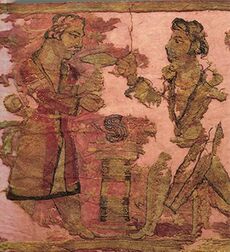


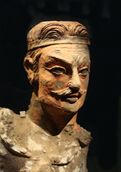
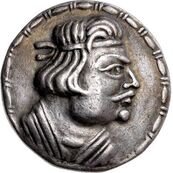
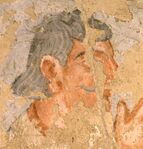
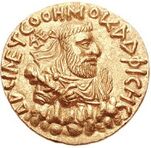
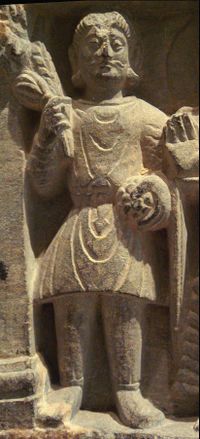

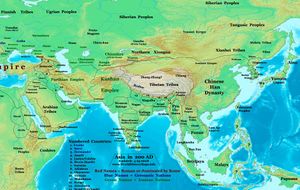
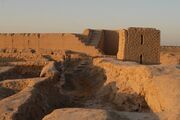
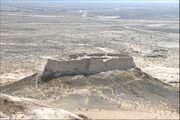
![The fortress of Shahr-e Zuhak.[58]](/w/images/thumb/e/ea/Fran%C3%A7oise_Foliot_-_Afghanistan_152.jpg/175px-Fran%C3%A7oise_Foliot_-_Afghanistan_152.jpg)
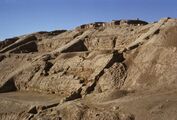
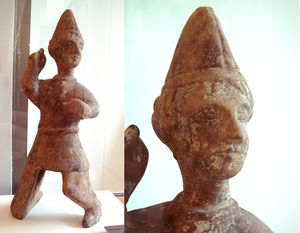
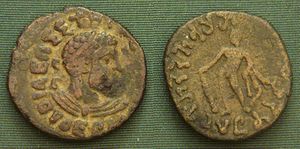

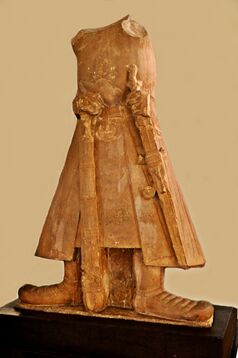
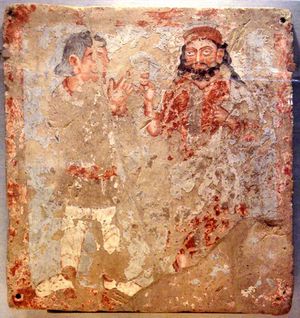
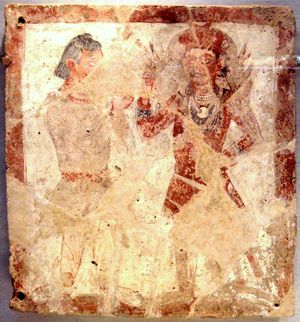
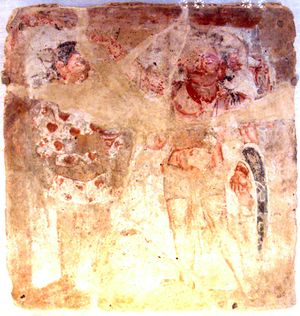
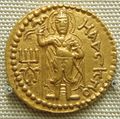
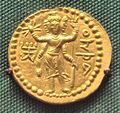
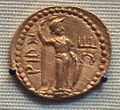
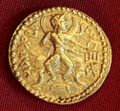
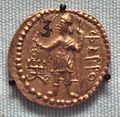
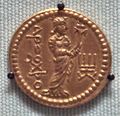

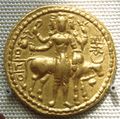
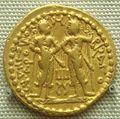

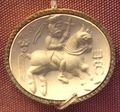
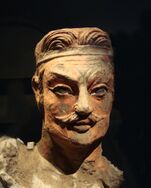
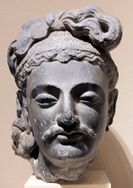

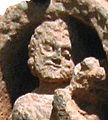


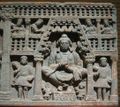
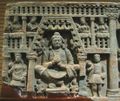




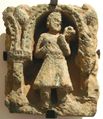
![Butkara stupa under the Kushans.[78]](/w/images/thumb/9/92/KushanStupa.jpg/120px-KushanStupa.jpg)
